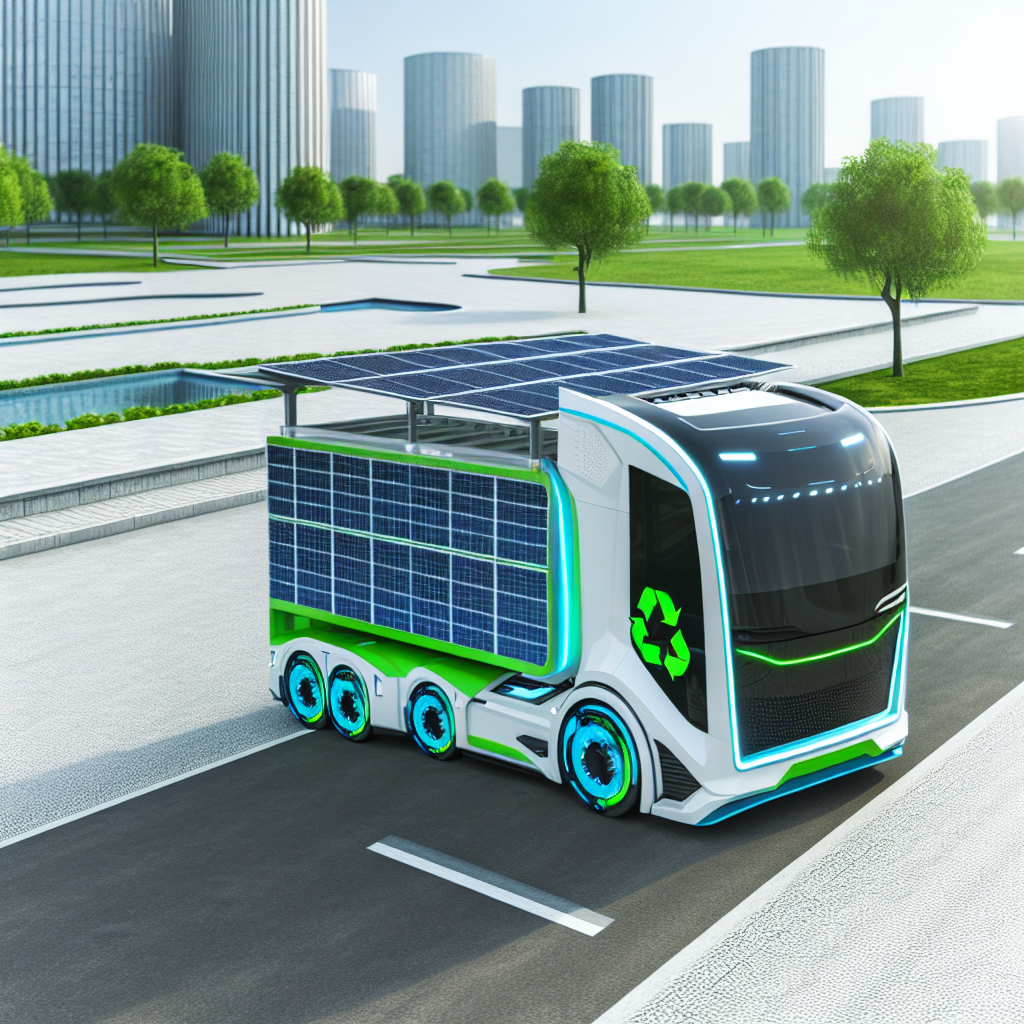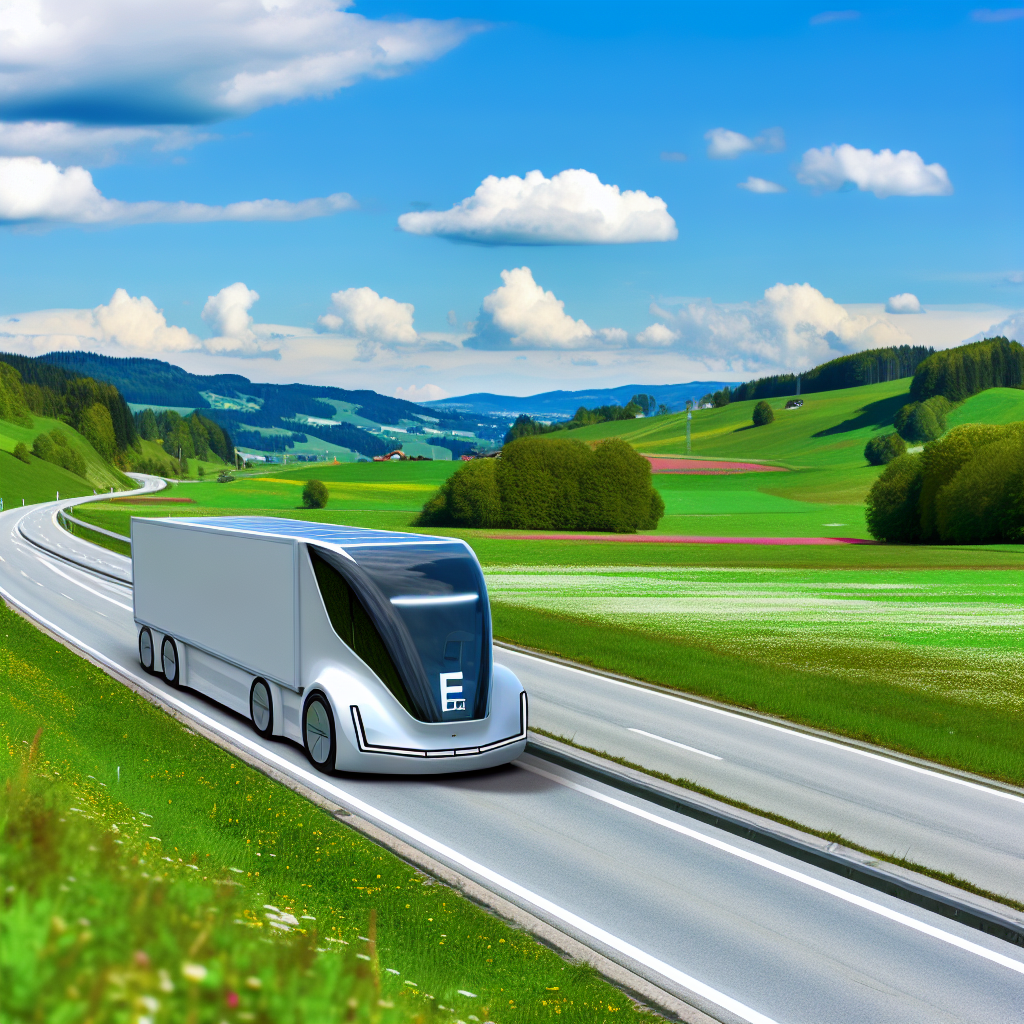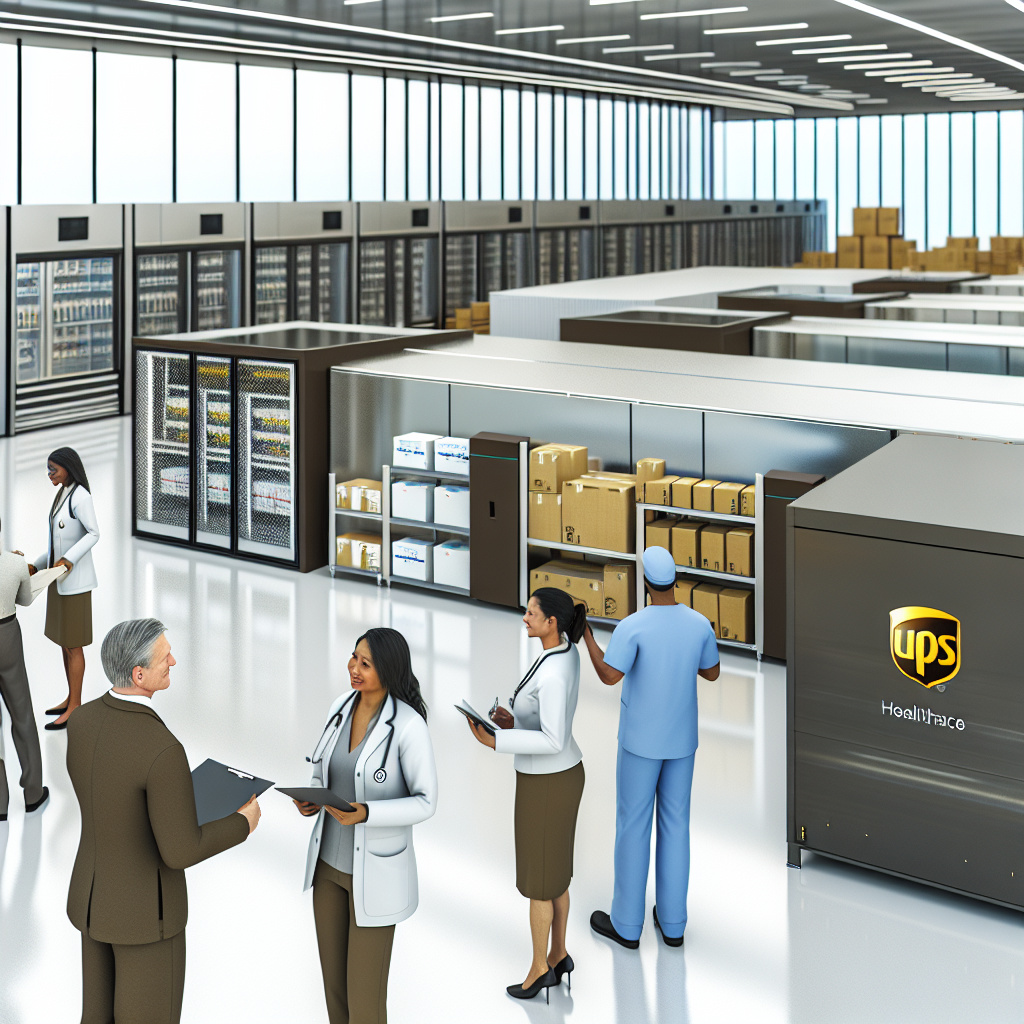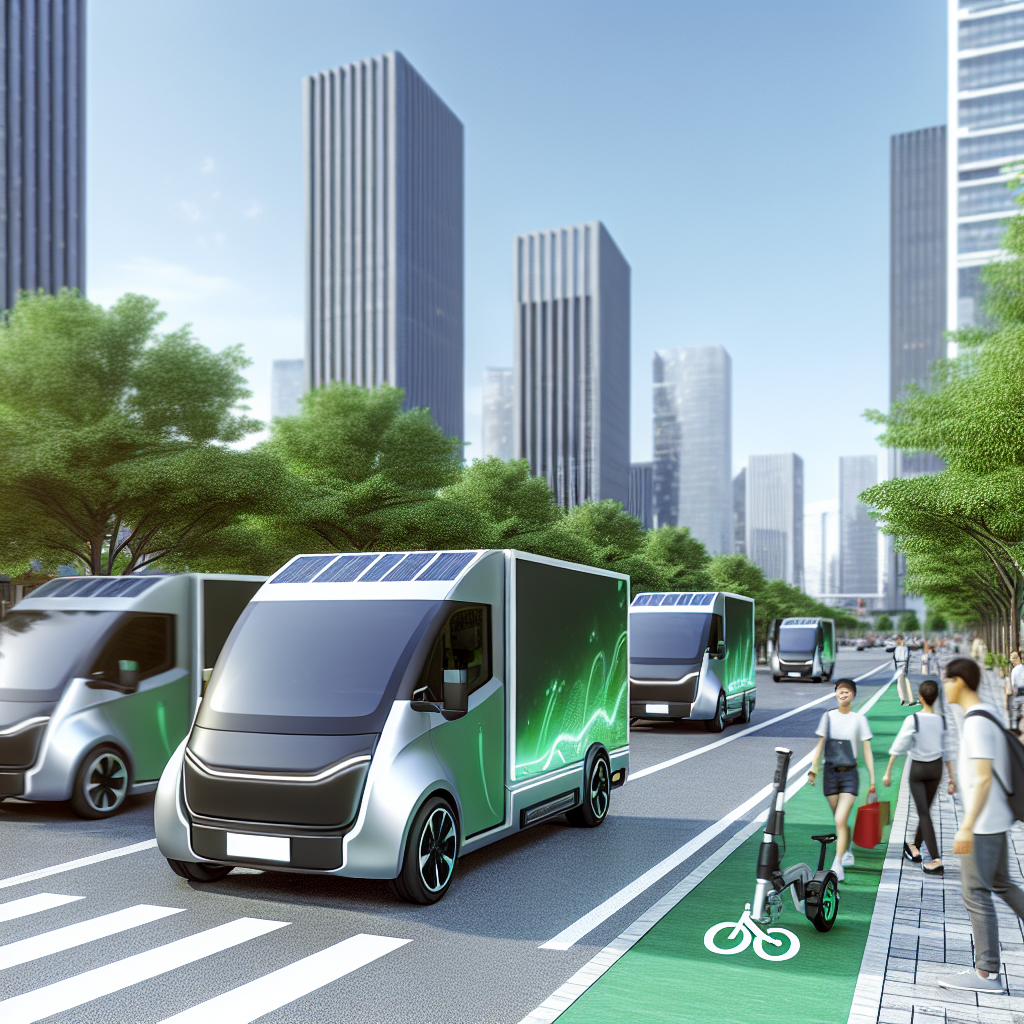Introduction to Zero-Emission Truck Development
As we enter an era increasingly defined by environmental consciousness and stricter regulatory demands, the development of zero-emission trucks has come to the forefront of the transportation industry. With emissions regulations tightening under initiatives like the EPA27 NOx rule, which aims for an impressive 82.5% reduction in harmful nitrogen oxides by 2027, manufacturers are faced with both opportunities and challenges.
Current Innovations
The race to innovate is on; automakers like Daimler Truck North America and Cummins are investing heavily to meet these evolving standards, driven by the need for cleaner alternatives to traditional diesel-powered vehicles.
Regulatory Landscape
However, navigating the regulatory landscape presents complexities as industry leaders call for clarity and consistency between regulations in both Canada and the U.S.
Article Overview
This article will explore the advances in zero-emission truck technology, including electric and hydrogen fuel solutions, while also addressing the significant obstacles that remain in achieving broader adoption. By examining these developments, we can better understand the vital role that emissions regulations play in shaping the future of freight transport.
Recent Developments Among OEMs in Zero-Emission Truck Sector
To enhance skimmability, here are the key developments in the zero-emission truck sector:
- Regulatory Influence: The EPA27 NOx rule mandates an 82.5% reduction in nitrogen oxides by 2027, driving OEMs to accelerate their investments.
- Collaboration on Hydrogen Fuel Cells: Daimler Truck North America collaborates with Cummins to incorporate hydrogen fuel cell technology into Freightliner Cascadia trucks, with a launch expected for select customers in 2024.
- New Manufacturing Facility: A joint venture among Cummins, DTNA, and PACCAR aims to produce battery cells for electric commercial vehicles in Mississippi, creating over 2,000 jobs and investing $2-3 billion.
- Infrastructure Coalition: The formation of Powering America’s Commercial Transportation (PACT) seeks to improve infrastructure for medium- and heavy-duty zero-emission vehicles in the U.S.
- Natural Gas Engine Introduction: DTNA introduces the Freightliner Cascadia powered by Cummins’ X15N natural gas engine, aligning with stringent emissions regulations and contributing to wider zero-emission solutions.
With these developments, OEMs like Daimler and Cummins are taking significant steps towards compliance and innovation in the move to zero-emission vehicles which emphasizes their dedication to leading the market.

| Regulation Name | Description | Impact | Applicable Regions |
|---|---|---|---|
| 2027 Emissions Standards | Stricter emissions standards set for trucks, focusing on reduced NOx levels. | Anticipated significant reductions in NOx emissions. | Canada, U.S. |
| EPA27 NOx Rule | Requires a reduction of NOx from 0.2 grams to 0.035 grams, aiming for 82.5% reduction | Enhances air quality by drastically lowering emissions. | Canada, U.S. |
Original Equipment Manufacturers (OEMs) in the automotive industry face significant challenges in complying with increasingly stringent emissions regulations. A primary concern is regulatory uncertainty, which complicates strategic planning and investment decisions. This uncertainty arises from varying global standards, evolving policies, and potential legal disputes between federal and state authorities. For instance, the legal conflicts between California’s Air Resources Board (CARB) and major truck manufacturers over emissions standards exemplify the complexities OEMs must navigate.
The financial implications of non-compliance are substantial. OEMs risk punitive fines that could cost them billions of dollars if their vehicles do not meet escalating CO₂ emissions and fuel economy standards, especially in regions like the EU and China. These fines threaten to decimate already slim profit margins.
To address these challenges, OEMs are adopting several strategies:
- Investing in Cleaner Technologies: Manufacturers are accelerating the development of battery electric vehicles (BEVs), hybrid vehicles, and other low-emission technologies to meet new standards and avoid penalties. For more on OEM responses in the context of emissions regulations, see articles on Fleet Owner and Clean Trucking.
- Enhancing Manufacturing Flexibility: OEMs are implementing flexible manufacturing platforms that allow the production of diverse powertrains on the same assembly lines. This adaptability enables swift responses to market shifts and regulatory changes without significant capital expenditure.
- Standardizing Emissions Reporting: To improve compliance and transparency, OEMs are working towards standardized methodologies for carbon reporting, particularly concerning Scope 3 emissions, which account for a significant portion of an automaker’s carbon footprint.
For an understanding of the financial challenges and compliance costs posed by emissions regulations, refer to the report from Wheels & Motion and the article from Financial Times.
By proactively investing in technology, enhancing operational flexibility, and standardizing reporting practices, OEMs aim to navigate the complexities of emissions regulations and mitigate the risks associated with regulatory uncertainty. As Krista Toenjes highlighted, “We just want a decision one way or another. We need clarity on that.” This call for clarity underscores the urgency and necessity for consistent regulatory frameworks that can bolster the industry’s efforts in creating sustainable solutions for the future.
The user adoption of zero-emission trucks (ZETs) has surged in recent years, with over 52,500 units on U.S. roads as of December 2024, reflecting a 23% increase from earlier counts. In 2023, the deployment of more than 25,000 ZETs represented an astonishing 546% jump compared to 2022.
The cargo van segment leads this growth, making up approximately 89% of all zero-emission truck deployments. In contrast, medium- and heavy-duty trucks showed a plateau in adoption rates over the 18 months leading up to mid-2024, despite some increase in heavy-duty truck deployments.
Geographically, California remains the leader in ZET adoption with 7,684 trucks, followed by Texas (5,009) and Florida (4,022). Notably, states like Maryland, Georgia, and New Mexico are catching up, indicating wider acceptance beyond traditional strongholds.
Future projections suggest that adoption rates for zero-emission and decarbonization vehicles could reach 25% by 2030 and 50% by 2040. However, challenges such as the higher total cost of ownership for ZETs compared to internal combustion vehicles hinder more widespread adoption. Regulatory changes, particularly the upcoming tailpipe emissions standards from the U.S. EPA that will come into effect from 2027 to 2032, are anticipated to further drive the transition towards zero-emission trucks.
This data underscores the promising yet complex road ahead for zero-emission vehicle adoption in the trucking sector.
Future Trends in Zero-Emission Trucking
As we look ahead, the zero-emission truck industry is poised for transformative growth driven by regulatory advancements and technological innovation. The EPA’s GHG Phase 3 rules, finalized in March 2024, set ambitious targets for reducing greenhouse gas emissions from heavy-duty vehicles, aiming for a remarkable 60% reduction in CO2 emissions for vocational trucks and 40% for tractor trucks by 2032. These standards signal a pivotal shift towards increased adoption of zero-emission vehicles (ZEVs) while emphasizing the need for manufacturers to innovate rapidly in response to market demands.
Industry leaders have echoed a positive sentiment regarding these changes. Sean Waters emphasized the need for OEMs to prepare early for regulatory compliance, noting that their extensive investment in clean technologies positions them well against the backdrop of these stringent rules. As Tom Linebarger, CEO of Cummins Inc., pointed out, “We actually think that we are going to grow and be more profitable because we’re leaning into decarbonization… We’re not trying to pull all the chips to our side of the table. We think in order to get these solutions done, we’re going to need to share profitability.” Similarly, Paul Rosa highlighted the importance of collaboration among key stakeholders, including truck manufacturers and infrastructure developers, to ensure a seamless transition to ZEVs. This collective effort aims to address potential infrastructure bottlenecks and set the foundation for broader adoption.
While challenges remain, such as the need for a robust charging network and the initial high costs of electric transportation, the industry’s outlook is optimistic. Recent increases in R&D investment are leading to advances in battery technology and hydrogen fuel cell capabilities, which promise to enhance vehicle performance and lower operating costs. Mike Roeth, Executive Director of the North American Council for Freight Efficiency, admits, “We believe that’s the long-term future, but it’s going to be messy to get there. We see messiness as not a horrible thing, just a reality of what our future is going to look like.”
Krista Toenjes reinforced the notion that clarity in regulatory processes will benefit the industry, helping stakeholders align their strategies more effectively. Businesses are steadily adapting their operations to embrace these changes, driven by both compliance mandates and consumer demand for sustainable solutions. Chris Spear of the American Trucking Associations cautions, stating, “ATA opposes this rule in its current form because the post-2030 targets remain entirely unachievable given the current state of zero-emission technology.”
Overall, as the regulatory landscape continues to evolve, zero-emission trucking is not just a compliance challenge but a significant opportunity for innovation and growth in the transport sector.
As the industry navigates the evolving landscape of emissions regulations, insights from key leaders highlight essential themes in the drive towards zero-emission trucking.
Sean Waters remarked, “The most important thing the OEMs have been doing… is getting ready for the 2027 NOx standards,” underscoring the proactive measures being taken by manufacturers.
Krista Toenjes contributed to this dialogue by stating, “We just want a decision one way or another. We need clarity on that,” reflecting a universal call within the industry for consistent regulatory frameworks that will support innovation and compliance.
Rick Mihelic further emphasized the complexity of the situation with his assertion, “It’s a very complicated situation and at some point in time we need to get back to some consensus opinion.” This sentiment encapsulates the urgency of forging collaborative pathways across the regulatory and manufacturing spectrum to ensure a sustainable future for zero-emission trucks.
As we conclude our exploration of the advances and challenges within the zero-emission truck market, it is clear that clarity in emissions regulations is paramount for fostering growth and innovation. The need for consistent guidelines across borders is echoed by leaders in the industry, ensuring that Original Equipment Manufacturers (OEMs) can effectively invest and plan for the future.
With significant advancements already seen in hydrogen fuel cell technology and electric vehicle deployments, the path forward hinges on the establishment of reliable regulatory frameworks. The proactive steps taken by manufacturers, including strategic partnerships and investment in cleaner technologies, highlight their commitment to reducing emissions and transitioning towards sustainable practices.
However, amidst these hopeful developments, regulatory ambiguity poses a risk to the industry’s momentum. As we look ahead, it is essential for stakeholders—governments, manufacturers, and consumers alike—to advocate for and support clear, effective emissions regulations. By doing so, we can not only accelerate the adoption of zero-emission trucks but also ensure a greener, more sustainable future in transportation.
It is time for collective action towards embracing these changes and sustaining the positive trajectory of zero-emission vehicles.
Call to Action: Engage in Zero-Emission Discussions
As stakeholders in the trucking industry, your involvement is crucial in shaping the future of emissions regulations and investing in zero-emission technologies. By embracing collaborative discussions, we can tackle the pressing challenges head-on and pave the way for a sustainable transport ecosystem. Community cooperation will not only enhance our efforts in meeting regulatory standards but drive innovation across all sectors. Let’s unite to advocate for clear, effective emissions regulations and support the transition to zero-emission trucks. Together, we can create a cleaner, healthier environment for generations to come. Join the movement now!
Call to Action: Engage in Zero-Emission Discussions
As stakeholders in the trucking industry, your involvement is crucial in shaping the future of emissions regulations and investing in zero-emission technologies. By embracing collaborative discussions, we can tackle the pressing challenges head-on and pave the way for a sustainable transport ecosystem. Community cooperation will not only enhance our efforts in meeting regulatory standards but drive innovation across all sectors. Let’s unite to advocate for clear, effective emissions regulations and support the transition to zero-emission trucks, including battery electric vehicles and hydrogen fuel cells. Together, we can create a cleaner, healthier environment for generations to come. Join the movement now!


